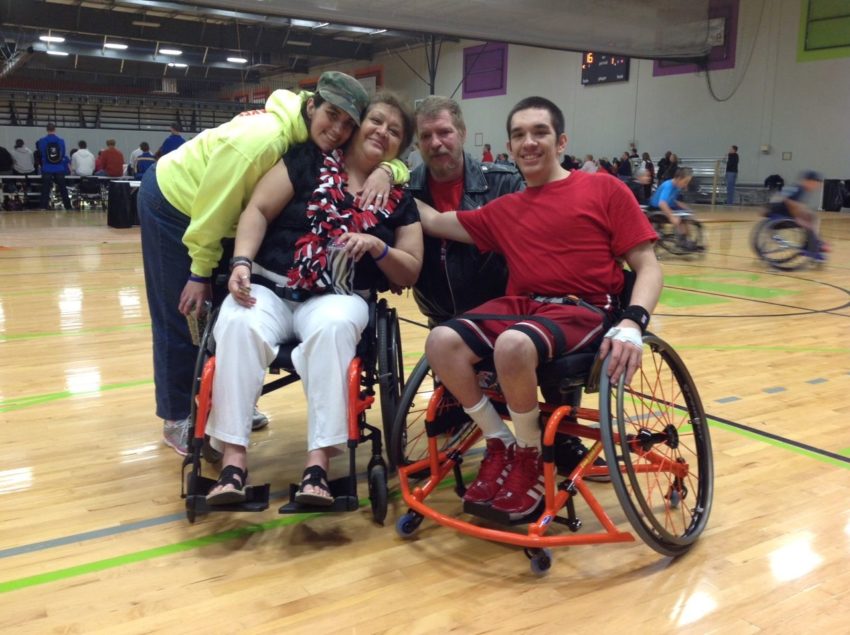Are you a disabled person that is keen to get fit, healthy and active, but you’re not quite sure where to start, or what exercise can even do for you? Read on to discover the physical and mental benefits of exercise, and why it’s important for you, your body and your mind.
1. Benefits of exercise
Exercise is great for all of us, whether we are disabled or not. It gets our hearts racing, improves our mood, and even helps us sleep. Exercise is generally defined as any activity outside of the normal daily routine, with the purpose of improving overall health and wellbeing, both physically and mentally, for those of us who engage in it.. Regular exercise is known to have significant health benefits including reducing the risks of:
- Coronary heart disease
- High blood pressure
- Colon cancer
- Diabetes
Exercise is great for all of us, whether we are disabled or not. It gets our hearts racing, improves our mood, and even helps us sleep. Exercise is generally defined as any activity outside of the normal daily routine, with the purpose of improving overall health and wellbeing, both physically and mentally, for those of us who engage in it.. Regular exercise is known to have significant health benefits including reducing the risks of:
- Coronary heart disease
- High blood pressure
- Colon cancer
- Diabetes
Although the physical benefits of exercise are readily known the impact on mental health is often overlooked. The endorphins released during exercise have been proven to reduce symptoms related to anxiety and depression. Therefore it can be said that exercise for all, leads to general feelings of well-being.
2. Why Exercise is so Important for Disabled People
Research suggests that exercise for disabled people is even more important than for those without a disability. Why? Well, did you know that conditions such as diabetes and obesity have been proven to be up to 66% more likely in disabled people than their non-disabled peers? It’s particularly important for those of us who are disabled to get moving on a regular basis if we want to live long, healthy and enjoyable lives.
And, let’s be honest, it’s a bit more difficult to get your body moving and heart racing if you are sitting down all day and living a relatively sedentary lifestyle! If that sounds like you, then your risk of related coronary, digestive and respiratory diseases is likely to be significantly greater than a similar person of the same age without an impairment.
But, it’s not all about the important physical aspect of exercise for disabled people; it’s important to look after our own mental health, too. With a lack of accessible transport, attractions and pubs and clubs, it’s no secret that disabled people can find it difficult to meet and connect with others, and might even be anxious at the thought. Exercise is a great natural medicine for this, and can be used to:
- Reduce anxiety
- Reduce feelings of stress
- Encourage clearer thinking
- Bring about a greater sense of calm
- Increase self-esteem
- Reduce risks of depression
- Improve sleep
Although these benefits are not exclusive to disabled people, it is important to recognise and note that these mental health issues are significantly more prevalent within the disabled community as a whole.
Alongside these mental health risks, is the issue of isolation. Disabled people are far more likely to withdraw socially and risk a lack of engagement in any meaningful activity. Sport or exercise presents an opportunity to engage in group activities and the surrounding environment which can, in turn, reduce the risk of isolation. So, if you’re feeling a little low and alone, go along to your local gym, swimming pool or adapted sports team; you will be met with warmth and encouragement, and it will be an opportunity to banish those negative feelings with movement and fun!
3. The Barriers to Exercise that Disabled People face
Sadly, getting out there and just ‘having a go’ isn’t quite so simple for many disabled people, and numerous barriers can get in our way when it comes to exercising properly. Some of these include:
- The Environment around us – All venues should be providing accessible facilities, however this is not always the case and can limit access for disabled people. Engaging with management at venues to discuss how the facilities can best be used can often improve access.
- The Perception surrounding disability – Social perception can often inhibit disabled people’s willingness to engage in exercise, maybe it’s a fear of not wanting to be seen as different, or standing out, or worry that someone might say something unkind and unnecessary. Either way, the world needs to embrace diversity more and this can’t be done if disabled people are hiding behind closed doors, so don’t be afraid to show your different capabilities with confidence, regardless of who is watching.
- The Self-belief/worth of a disabled individual – Negative emotions about ourselves can reduce engagement, but it’s important to also think about what a positive self-image can lead to: new opportunities, accomplishments and friendships.
4. Finding the Balance with Exercise
It’s important for all people, including those who are disabled, to try and strike up an exercise regime suited to their individual needs and requirements. Exercise does not necessarily mean going to the gym or running a marathon; chair based exercises focusing on muscle strength and tone may have an just as much impact on your general health and well being.
Here’s to a happy, healthy future – where we all feel able and encouraged to get active, make friends and see the physical and mental benefits exercise can bring.
